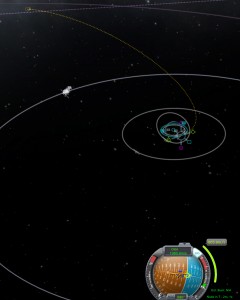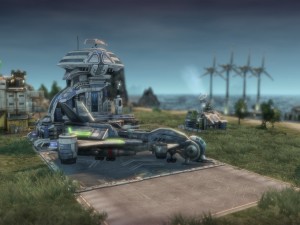Early access influence
During my ongoing literature review I often discover interesting facts about things I’ve never thought about. Sometimes I can connect these facts with my own observations: The result is mostly a completely new idea why things are as they are. Maybe these ideas are new to you, too. Therefore I’ll share my new science based knowledge with you!
This week: This time, I like to trace the influence of an early access game version on the development process of the game.
I’ve already presented the concept of early access games and their impact on the development process of a game[1]. Today, I like to trace the changes in the development process of Buzz Aldrin’s Space Program Manager (BASPM)[2]. Two months after the release of the first early access version, the developers received a huge amount of suggestions and feedback. After analyzing the feedback, the developers decided to rewrite the roadmap of the development process: the game will receive some additional major features the community has requested[3].
BASPM is a strategy game that allows the player to become the director of a space agency. The main goal of the first part of the game is to replay the race to land on the Moon. In order to do so, the player can unlock historic missions and launch them into space. In contrast to Kerbal Space Program, BASPM doesn’t allow the player to control the space crafts directly. Instead, it’s more about managing the funds of space agency, hiring the best employees and improving the components of the space crafts by assigning scientists to the projects.
At the end of October 2013, the early access version of BASPM was released. Over the last two months, the developers released on a weekly basis a new version. The weekly releases added new usability features and new missions to the game. At the end of December 2013, the game received one of the most desired features: the Apollo Program.
Over these two months, thousands of interested players experienced the game and made a lot of suggestions based on their experiences. Some of these suggestions could be implemented right away in a weekly update, but some other requests are more challenging and can’t be quickly implemented. Additionally, these features alter to a certain degree the concept of the whole game.
One of these features is the request to be able to replay the race for the very first landing on the Moon. The original concept of the game was without any direct competitors. However, a lot of players requested the feature to be able to race against another fraction.
At this point, the usefulness of an early access version becomes very obvious. The game isn’t finished yet and the developers have a lot of time to listen to the suggestions of their players. Additionally, the developers like to create a game the players really want to play. In the end, the developers decided to implement two new „Race to the Moon“ campaigns: the player will be able to decide whether he likes to play for the Soviets or for the USA.
To wrap things up, the example of BASPM shows the great potential of early access versions, because the developers can develop their game together with their audience. Features and issues can be adjusted right away and the final product will match the interests of the players. Furthermore, granting access to an unfinished game, improving it on a regular basis and responding to the reports of the players can increase the trust of the players in the developers. The players realize, that their oppinion is important and they start to feel very welcome. This will also strengthen the interest in the final product, because the players have helped to make the game as it is.
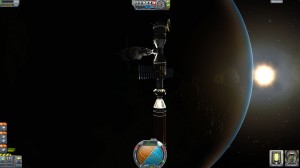
![Rendered by QuickLaTeX.com \[ P = 2 \pi \left ( \frac {R^3} {G M_\text{total}} \right )^\frac{1}{2} \]](http://blog.learning-by-gaming.net/wp-content/ql-cache/quicklatex.com-8ee1c89aea70cc46022714a2a80d86ad_l3.png)
![Rendered by QuickLaTeX.com \[ P = 2 \pi \left ( \frac {(600 e^3 m + 300 e^3 m)^3} {6,673 e^{-11} m^3 s^{-2} kg^{-1} * 5,292 e^{22} kg} \right )^\frac{1}{2} = 2854,783 s \]](http://blog.learning-by-gaming.net/wp-content/ql-cache/quicklatex.com-83b1eda6b7d8ae8907d61af2874c74c9_l3.png)
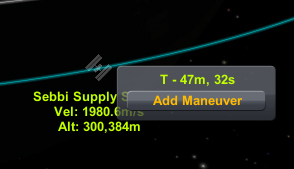
![Rendered by QuickLaTeX.com \[ v = \left ( \frac {6,673 e^{-11} m^3 s^{-2} kg^{-1} * 5,292 e^{22} kg} {(600 e^3 m + 300 e^3 m)} \right )^{\frac {1}{2}} = 1980,839 \frac{m}{s} \]](http://blog.learning-by-gaming.net/wp-content/ql-cache/quicklatex.com-ead9aab9cf750f52e89921484116bebc_l3.png)
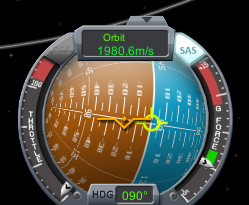
![Rendered by QuickLaTeX.com \[ v = \left ( \frac {2 * 6,673 e^{-11} m^3 s^{-2} kg^{-1} * 5,292 e^{22} kg} {(600 e^3 m + 300 e^3 m)} \right )^{\frac {1}{2}} = 2801,33 \frac{m}{s} \]](http://blog.learning-by-gaming.net/wp-content/ql-cache/quicklatex.com-7b220cdc3d512b0a7de86136f33acb14_l3.png)
